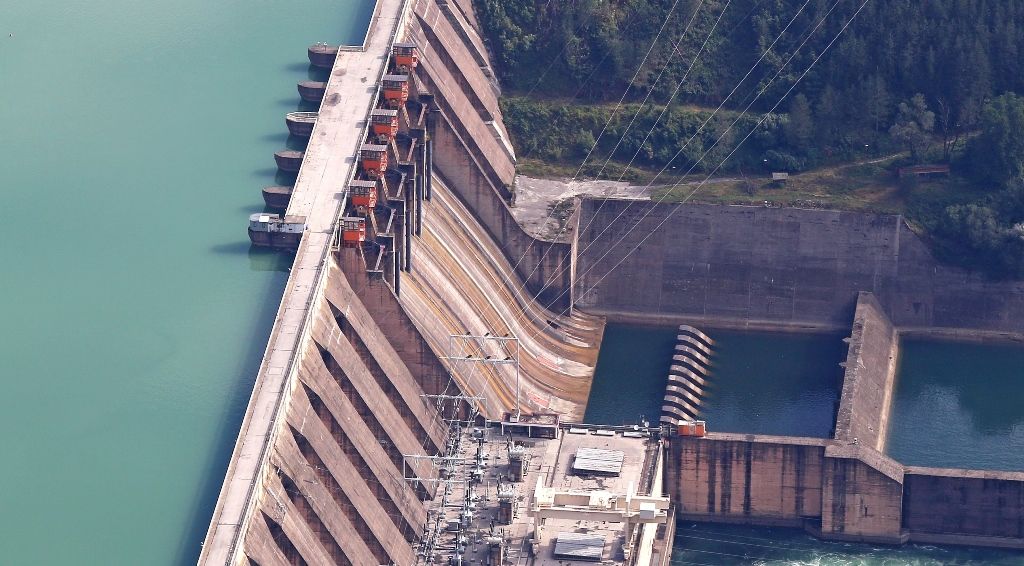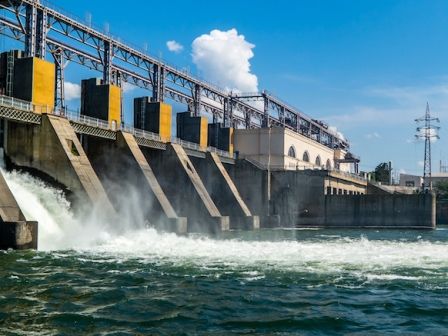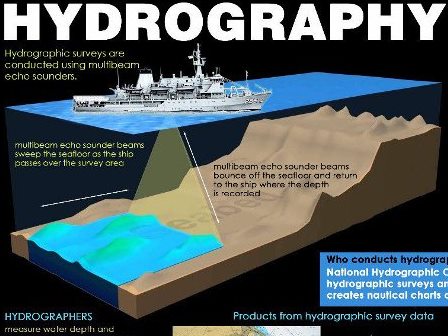A compensation tank is a water storage device that is used as a pressure neutralizer, in the water conduction systems, of a hydroelectric plant, to cushion the variation of excess pressure.
In short, the surge tank mitigates pressure variations due to rapid changes in water velocity.
For hydropower uses, a surge tank is an additional storage space between the main storage reservoir and the powerhouse, as close to the powerhouse as possible.
The main functions of the surge tank are:
- When the load decreases, the water backs up and is stored in it.
- When the load increases, the surge tank will provide an additional supply of water.

Hydroelectric Power Plant is
The most common type of hydroelectric power plant is a reservoir facility.
A reservoir facility, usually a large hydroelectric system, uses a dam to store river water in a reservoir.
The water released from the reservoir flows through a turbine, causing it to spin, which in turn activates a generator to produce electricity.
Water can be released to meet changing electricity needs.
The energy produced by the hydel power plant is
The electricity, a hydraulic turbine converts the energy of flowing water into mechanical energy. A hydroelectric generator converts this mechanical energy into electricity.
A turbine and generator produce the electricity
Electricity demand is not “flat” and constant. Demand goes up and down during the day, and at night there is less need for electricity in homes, businesses and other facilities.
For example, at 5:00 p.m. m. On a hot weekend day, there is a huge demand for electricity to run millions of air conditioners.
Pumped storage hydropower
Hydroelectric plants are more efficient at meeting peak energy demands for short periods than nuclear and fossil fuel plants, and one way of doing this is through “pumped storage,” which reuses the same water more than one time.
Pumped storage is a method of keeping water in reserve for peak period power demands, by pumping water that has already flowed through turbines back to a storage pool above the power plant. at a time when customer power demand is low, such as overnight.
The water is then allowed to flow back through the turbine generators at times when demand is high and a heavy load is placed on the system.
Hydroelectric energy renewable or nonrenewable
The main advantages of hydropower are that it is 100% renewable, can generate electricity at any time of the day or night, and is generally safe to operate.
However, it is a challenge to build hydroelectric plants because a river needs to be completely dammed. Not many utilities can afford this, and governments usually foot the bill for hydroelectric plants.
Interestingly, states with lots of hydroelectric plants tend to have cheaper electricity costs.
So if states are willing to pay the upfront costs to build hydroelectric plants, they can lower consumers’ electricity bills.
Solar power is a cheap source of renewable energy, but hydropower is more consistent as water runs through turbines 24/7 compared to the sun only shining during the day.
While wind power is also a very consistent form of renewable energy, wind turbines will have a higher maintenance cost than hydroelectric plants because the turbines are larger and constantly moving, which means they break down more easily.
When it comes to biofuels, hydropower is superior because once the plant is built and running, the environmental impacts are less.
With biofuels, you have to constantly cut down trees or plants that will be burned for fuel.
But with hydropower, water is plentiful and doesn’t emit CO2 when it powers the plant.

Surge Tank in Hydro Power Plant
Surge tanks can provide a fundamental feature for the hydraulic design of hydropower projects

Bathymetric Survey
The variation in relief constitutes the morphology of the ocean floor. Charting of the ocean is very important for many reasons.

Topographic Survey Cost
As a home or property owner, you may need to inspect your land. What is the cost of the topographic survey?
